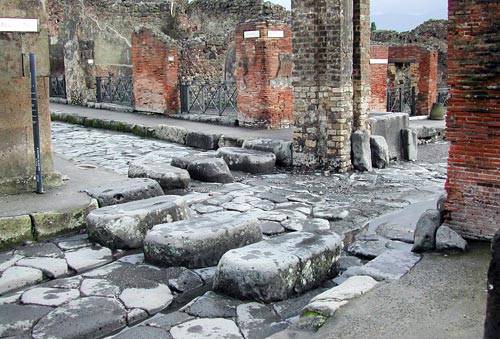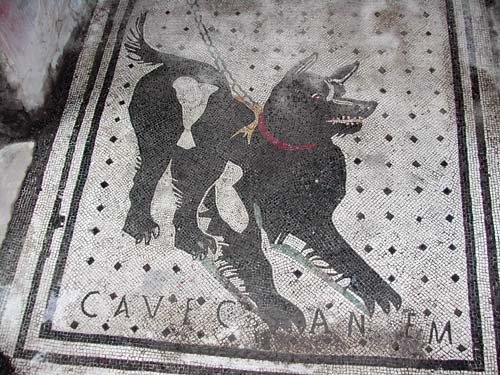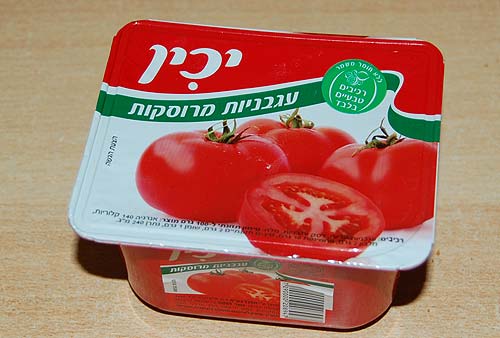The “zebra” pedestrian crossing with its rectangular stripes is all too familiar. According to Wikipedia, it was introduced after WW2; but its roots appear much earlier in history…
During our recent tour of Pompeii I saw how the Romans approached the matter, which they did with their usual pragmatic attitude. Pompeii’s streets are paved with large black flagstones, and are flanked by tall sidewalks. And at frequent intervals these are connected by pedestrian crossings like these:

The similarity to our present day zebra crossing is striking, except that these stripes are as tall as the sidewalk and act as stepping stones. The reason is obvious: when the city was alive – before Vesuvius wiped it out with a belch – the streets must’ve been at various times packed with water, mud, trash and worse. The refined ladies who lived in the exquisite villas we see in ruin today were no doubt eager to keep their dainty sandals and flowing robes above street level as they went about their shopping.
And they had these crossings all over the town – from single-stone versions in smaller alleys to multiple crossings at large intersections, as you see below.


The nearer crossing in the last photo attests to another attribute of this design: note the deep narrow grooves along the road which go through the spaces between the stepping stones. The stones were spaced to the same width as the wheels on a standard cart, allowing wheeled traffic to drive through undisturbed, resulting in the eroded ruts you see in the photo.
The ancient Romans were amazingly like us…
If you want to learn how they lived, you have two options: watch the HBO series (which made an honest effort at historical accuracy), or go visit Pompeii, a lively town frozen in time by that devastating Vesuvian eruption in 79 AD.
I did both, and in Pompeii I snapped this mosaic floor at the street entrance of one of the houses:

 Nice dog, this one: not too ferocious to allow sympathy, yet substantial enough to scare away thieves. And in case your Latin is rusty, CAVE CANEM means exactly what its modern counterpart in the image at right does (but then, Latin being an important influence in English, you could have identified the words in “Caveat” and “Canine”…)
Nice dog, this one: not too ferocious to allow sympathy, yet substantial enough to scare away thieves. And in case your Latin is rusty, CAVE CANEM means exactly what its modern counterpart in the image at right does (but then, Latin being an important influence in English, you could have identified the words in “Caveat” and “Canine”…)
I was watching 2001: A Space Odyssey again. Such a contrast to today’s special-effect-based space operas… an incredible movie by two giants, and not a bit of CGI in it, either (Sigh…)
Anyway, in the beginning Dr. Heywood arrives at the space station, and is subjected to a “Voice Print Identification” process as he enters a secure area. And it was in this very week that my bank had me record my voice for voice print ID, a new regulatory requirement for phone based transactions in this country.

So, it is 2010, and the futuristic technology that Clarke and Kubrick envisioned in 1968 for use in 2001 is here. Unfortunately, that’s the least interesting prediction of this imaginative movie: we don’t have ubiquitous video telephony (Skype excluded), we don’t have a moon base, we don’t travel to Jupiter, and we don’t have an elegant space station that provides artificial gravity by rotating on its axis.
We do have a space station, true, but it looks like a pile of accreted floating junk… 🙁
When we spent a while in the US in the eighties I was amazed and amused by the silly warning “serving suggestion” found on food packaging. I mean, what were they afraid of… a flood of lawsuits by people that opened the soup powder sachet and failed to extract a steaming soup tureen?…
Like many a silly idea this practice hit Israel a few years later, and I stopped noticing it – until this caught my eye:

This has the ubiquitous “Serving Suggestion” in fine print; what makes it unusual is two incongruities:
- Slicing one tomato in half hardly counts as a serious serving suggestion.
- These tomatoes would require a Magician to be served in this way. You see, the caption on the green stripe says “Crushed Tomatoes”!
I don’t expect the marketroids at Yakhin food products to be fluent in the laws of thermodynamics and entropy, but even they must know that you can serve a whole tomato by crushing it, but you can’t make a crushed tomato whole again.
Bon Appetit!




 Nice dog, this one: not too ferocious to allow sympathy, yet substantial enough to scare away thieves. And in case your Latin is rusty, CAVE CANEM means exactly what its modern counterpart in the image at right does (but then, Latin being an important influence in English, you could have identified the words in “Caveat” and “Canine”…)
Nice dog, this one: not too ferocious to allow sympathy, yet substantial enough to scare away thieves. And in case your Latin is rusty, CAVE CANEM means exactly what its modern counterpart in the image at right does (but then, Latin being an important influence in English, you could have identified the words in “Caveat” and “Canine”…)


